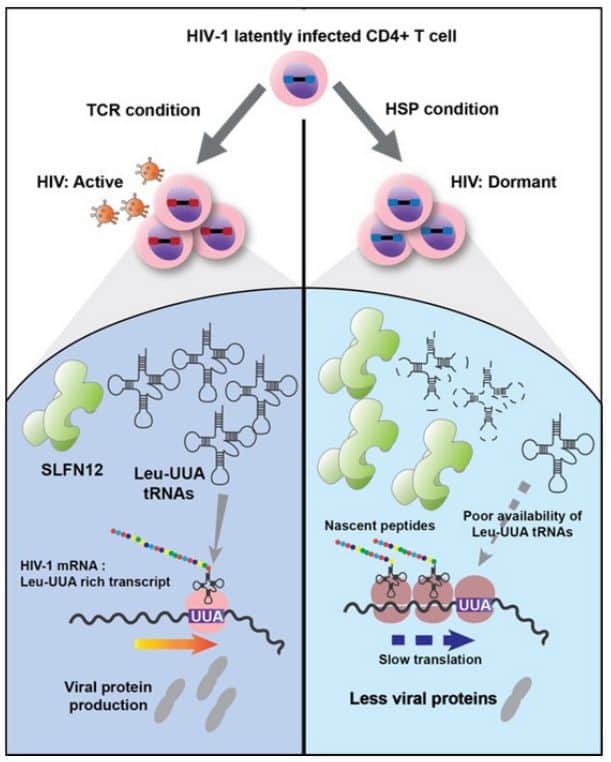Uncovering the Secret to Eliminating HIV Latency: A Breakthrough Study
A groundbreaking study led by researchers from MELIS-UPF has identified a new HIV restriction factor, Schlafen 12 (SLFN 12), which could be a game-changer in developing improved therapeutic strategies to cure HIV infections. The study found that SLFN 12 prevents viral protein production and enables virus-infected cells to evade anti-HIV therapy and immune responses.
HIV infections, if not treated, can progressively damage the immune system and lead to the final stages of AIDS, resulting in approximately 650,000 deaths per year worldwide. While there is no cure for established infections, antiretroviral therapy can help individuals living with HIV lead a relatively healthy life. However, the virus can return from a reservoir of latently infected cells once treatment is discontinued. These findings offer hope for developing more effective treatments to combat HIV latency and ultimately find a cure for the virus.
“Latency is a major barrier impairing virus elimination in HIV-infected individuals,” explains Andreas Meyerhans, ICREA research professor at UPF who has coordinated the study together with Juana Díez.
“We will not be able to cure an existing infection until we will get rid of latently infected cells. This is why it is essential to understand how latency works.”
New Strategies for Combating HIV: Schlafen 12 Emerges as a Promising Candidate
In a recently published paper in Communication Biology, researchers have identified and characterized SLFN12, a protein that inhibits the production of viral proteins by cleaving specific cellular tRNAs, which serve as building blocks for protein synthesis. The presence of active SLFN12 results in HIV-infected CD4 T cells being unable to complete the virus production process, leaving the HIV RNA templates in a latent state.
“SLFN12 impairs protein production, restricting the production of viral particles,” adds first author Mie Kobayashi-Ishihara.

“Such cells are latently infected, invisible to the immune system and anti-HIV therapies.”
In addition, the study found that SLFN12 can selectively hinder HIV protein production while leaving cellular protein production unobstructed.
“SLFN12,” according to Juana Díez, “cleaves Leucine-UUA tRNA, a building block that is rarely used for cellular proteins but essential for HIV viral proteins.”
This discovery presents an opportunity to develop novel therapeutic approaches to combat HIV.
“Blocking SLFN12 antiviral functions should increase viral protein expression and thus, enable the host immune system and antiviral drugs to better eliminate viral reservoirs. Once you start producing the virus, it becomes visible again,” adds Meyerhans.
“You get your target back. So, you can attack it, and hopefully, definitely eliminate the latent infected cells.”
Source: 10.1038/s42003-023-04841-y
Image Credit: Getty
